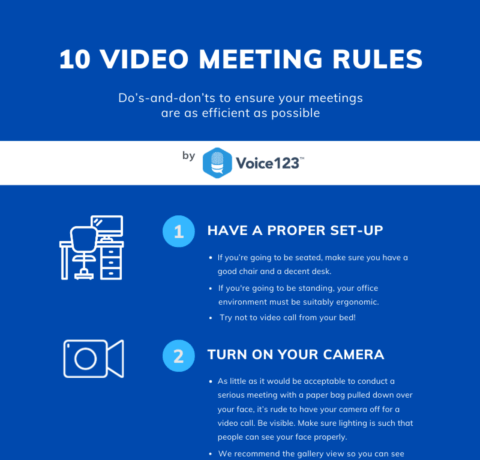Video Conferencing Etiquette: Do’s and Don’ts for Virtual Meetings
As video conferencing becomes a staple of modern communication, understanding the etiquette of virtual meetings is crucial for maintaining professionalism and ensuring productive interactions. Whether you’re participating in a casual team check-in or a formal business presentation, following certain guidelines can make a significant difference in how you’re perceived and how smoothly the meeting runs. In this blog post, we’ll explore the essential do’s and don’ts of video conferencing etiquette to help you navigate your next virtual meeting with confidence and professionalism.
Do: Test Your Equipment Before the Meeting
Before joining a video conference, it’s essential to test your equipment. This includes checking your internet connection, camera, microphone, and any necessary software. Ensure that everything is functioning correctly to avoid technical issues during the meeting. Testing beforehand also gives you time to troubleshoot any problems, allowing you to join the meeting on time and with confidence.

Don’t: Forget to Mute Yourself When Not Speaking
One of the most common video conferencing mistakes is leaving your microphone on when you’re not speaking. Background noise, such as typing, breathing, or other household sounds, can be distracting to other participants. Always mute yourself when you’re not actively speaking to minimize distractions and ensure that the focus remains on the person who is speaking.
Do: Dress Appropriately
Even though you may be participating in a virtual meeting from home, it’s important to dress appropriately. Your appearance should reflect the nature of the meeting and your role within the organization. Business casual is typically a safe choice unless the meeting calls for more formal attire. Dressing professionally not only shows respect for your colleagues but also helps you get into the right mindset for the meeting.
Don’t: Multi-Task During the Meeting
It can be tempting to check your email, browse social media, or work on other tasks during a video conference, especially if you’re not actively participating. However, multi-tasking during a meeting is unprofessional and can lead to missed information or a lack of engagement. Give the meeting your full attention, and if you need to take notes, do so in a way that doesn’t distract from your participation.
Do: Pay Attention to Your Background
Your background can say a lot about you during a video conference. Choose a clean, uncluttered space that is free from distractions. If you’re unable to find a suitable background, consider using a virtual background that is professional and neutral. Make sure the lighting is adequate so that you’re clearly visible on camera. Good lighting should be in front of you, not behind, to avoid being backlit.
Don’t: Interrupt Others
Interrupting others during a video conference can be more disruptive than in a face-to-face meeting due to potential audio delays. Allow others to finish speaking before you start, and if you need to interject, use visual cues or the chat function to indicate that you have something to add. Practicing patience and active listening is key to maintaining a respectful and productive dialogue.
Do: Use the Chat Function Wisely
The chat function in video conferencing platforms can be a useful tool for sharing links, asking questions, or making comments without disrupting the flow of the meeting. However, it’s important to use it wisely. Avoid off-topic discussions or excessive use of emojis that can be distracting. Keep your chat contributions relevant and professional.
Don’t: Ignore Body Language and Facial Expressions
Even though video conferencing limits physical presence, body language and facial expressions still play a significant role in communication. Maintain eye contact by looking at the camera when speaking, and be mindful of your facial expressions to ensure they match the tone of the conversation. Nodding and smiling can go a long way in showing that you’re engaged and attentive.
Do: Follow Up with a Summary Email
After the video conference concludes, it’s a good practice to send a follow-up email summarizing the key points discussed and any action items. This not only helps reinforce what was covered during the meeting but also provides a reference for those who may have missed something. It also shows that you are organized and proactive in ensuring the meeting’s objectives are met.
Conclusion
Video conferencing is an essential tool in today’s digital world, but it requires a certain level of etiquette to be effective. By following these do’s and don’ts, you can ensure that your virtual meetings are professional, productive, and respectful. Remember, good video conferencing etiquette reflects well on you and contributes to a positive and efficient meeting experience for everyone involved.



